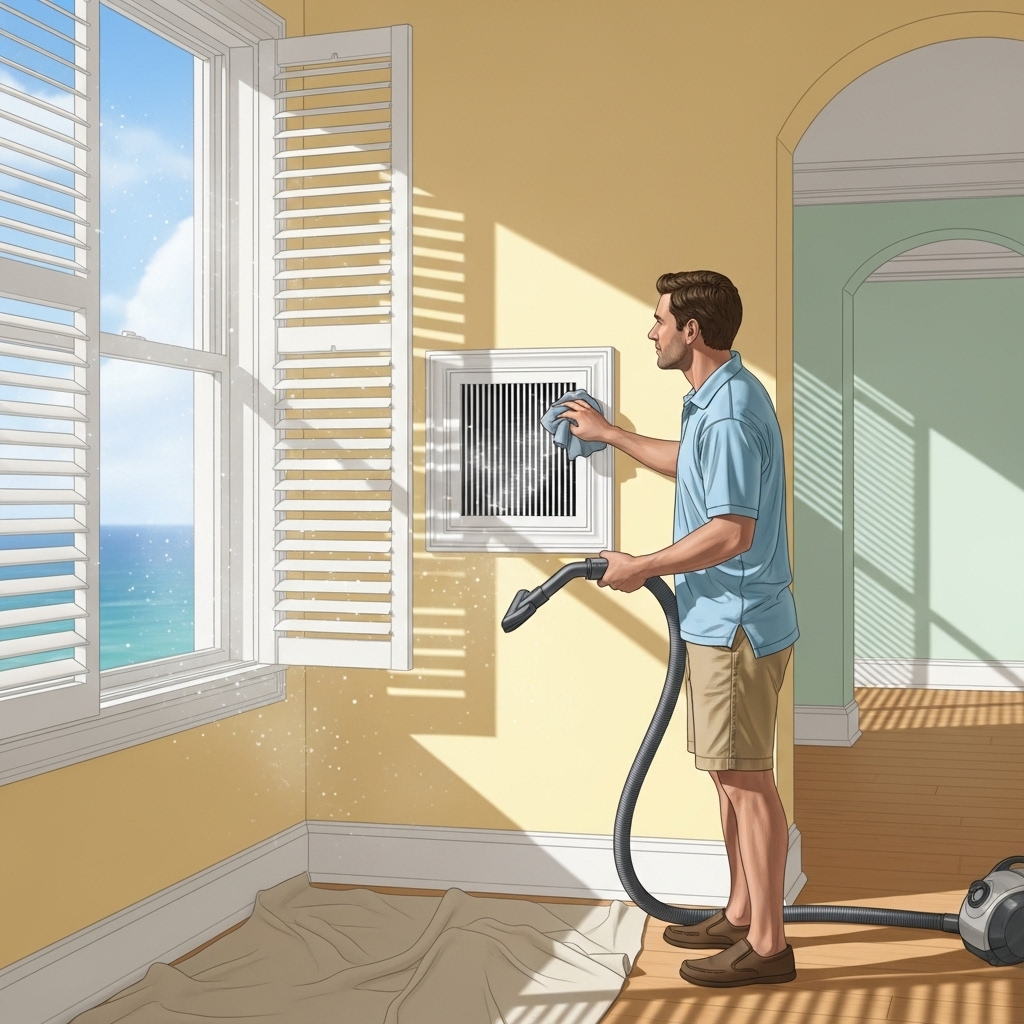Introduction
Malibu living offers ocean views, fresh breezes, and sun-soaked days, but those same coastal benefits also bring challenges for indoor air quality. Salt mist, seasonal humidity, pollen, and smoke particulates can accumulate in ductwork and circulate through rooms. This comprehensive guide explains what Malibu homeowners should know about duct cleaning: when to do it, how to prepare, what a proper process includes, and how to maintain results year-round. If you want a reliable starting point or need help comparing DIY steps to professional standards, review a trusted reference for air duct cleaning as you plan your approach.
A clean duct system supports better airflow, reduces dust on surfaces, and helps protect sensitive HVAC components like coils and blowers. While duct cleaning is not a cure-all, pairing it with effective filtration, humidity control, and targeted source removal produces consistently fresher air in Malibu’s unique climate.
Why Air Duct Cleaning Matters in Malibu
Indoor air quality concerns along the coast differ from inland environments. Sea salt can cling to fine dust, making it tackier and more likely to adhere to grilles and duct walls. Certain months bring elevated humidity that can trap odors. When wildfire smoke travels through the region, ultrafine particles may pass into return pathways and settle within the system. Regular inspection, prompt filter changes, and scheduled cleanings help offset these stressors and maintain healthier air in the home.
Signs Your Ducts Need Attention
- Visible dust puffs when the system starts up or when tapping a register
- Gray or dark residue around supply and return grilles
- Unexplained musty or smoky odors when the HVAC runs
- Hot and cold spots suggesting restricted airflow
- Increased dusting frequency on furniture and floors
- Recent construction, remodeling, or wildfire smoke exposure
Pre-Clean Preparation
- Switch off the HVAC system and allow fans to stop completely.
- Protect furnishings with drop cloths and create containment around work areas.
- Open windows slightly, when outdoor air is good, to vent airborne dust safely.
- Assemble a HEPA vacuum, soft brushes, microfiber cloths, screwdrivers, and fresh filters.
- Photograph vent placements and connections for easy reassembly.
How the Cleaning Process Works
A thorough duct cleaning addresses both the accessible components and the interior pathways that recirculate air. The following steps outline a comprehensive approach you can use to evaluate a professional service or to guide a careful DIY effort.
- Register Removal and Cleaning: Unscrew and remove grilles, wash metal ones in warm soapy water, rinse, and dry completely. Wipe other finishes with a damp microfiber cloth.
- Surface Loosening: Lightly brush loose dust around duct openings and immediately vacuum the debris with a HEPA machine.
- Vacuuming and Agitation: Insert a long hose into straight runs and use extendable brush rods for gentle agitation. Avoid aggressive force that could damage joints or tear flex ducts.
- Return Path Focus: Prioritize return ducts where dust tends to congregate. Vacuum slowly and methodically.
- Blower Compartment and Coil Area: If accessible and allowed by warranty, vacuum the blower compartment and gently brush the coil face with a soft attachment or coil-safe cleaner.
- Main Trunk and Plenum: Vacuum accessible sections and ensure you do not disturb sealant or insulation.
- Filter Replacement: Install the correct filter size and MERV rating appropriate for your system.
- Start-Up Check: Reassemble registers, power on the HVAC, and confirm steady airflow and normal sounds.
Malibu Climate Tips
- Manage Humidity: Keep indoor humidity in a comfortable range. Use bath fans and, if needed, a dehumidifier during damp periods to discourage microbial growth.
- Post-Smoke Protocols: After smoke events, change filters more frequently and conduct a light cleaning of registers and the first several feet of ducting.
- Salt and Corrosion Watch: Dry all metal parts thoroughly after washing and check for corrosion on grilles or fasteners.
- Ventilation Timing: When possible, ventilate during the cleanest outdoor air hours to flush dust without bringing more irritants inside.
Filter Strategy for Coastal Homes
Filters are your first line of defense. A higher-efficiency filter (MERV 11–13 when your blower can handle it) captures finer particles, including smoke residue. Replace filters on a schedule and any time you notice a pressure drop or increased dust. Keep spare filters on hand, especially during late summer and fall when smoke or high pollen can spike.
DIY vs. Professional Service
Many homeowners can handle register cleaning, surface dust removal, and preliminary vacuuming. However, complex duct networks, tight bends, and suspected contamination often require specialized equipment and training. Negative-pressure vacuums, rotating brush systems, and experienced technicians help ensure thorough results, particularly in Malibu homes where salt, moisture, and seasonal smoke complicate the job. If you are uncertain about your layout, concerned about odors, or want a deeper inspection, seek reputable specialists and review best practices for professional air duct cleaning to set expectations about containment, filtration, and verification.
After-Clean Care and Verification
Shine a light into multiple vents to confirm dust reduction. Photograph post-clean results for your records. Note the date on your maintenance calendar and set reminders for filter changes. If certain rooms still feel stuffy, check for closed dampers, blocked returns, or furniture obstructing supply vents. Also consider duct sealing and insulation improvements that can significantly improve comfort in Malibu’s microclimates.
Maintenance Calendar
- Monthly: Inspect and change filters when dirty. Wipe down grilles as needed.
- Seasonally: Vacuum just inside supply and return openings and check for rattling registers.
- Annually: Conduct a deeper inspection of returns and main trunks. Evaluate whether a whole-system cleaning is warranted.
- Event-Driven: After smoke, construction, or a dust storm, perform an extra filter change and spot cleaning.
FAQ
Q: How often should duct cleaning be done in Malibu? A: Inspect annually and clean as needed, with extra attention after smoke events or major renovations.
Q: Will cleaning ducts solve all indoor air issues? A: No single step solves everything. Combine duct cleaning with filtration upgrades, source control, ventilation, and humidity management.
Q: Can I use bleach in ducts? A: Avoid harsh chemicals. Use minimally damp cleaning methods and coil-safe products only where appropriate.
Q: What if I suspect mold? A: Address moisture first, verify the issue with qualified evaluation when possible, and remediate according to recognized guidance.
Q: How do I know a professional did a good job? A: Ask about containment, HEPA filtration, agitation methods, and post-clean verification. Request before-and-after photos.
Take the Next Step Toward Cleaner Malibu Air
If you want expert help reaching deep duct runs, validating airflow, or handling post-smoke cleanup, schedule a trusted air duct cleaning service. With a proactive plan, your Malibu home can stay fresher, more comfortable, and better protected through every season.

